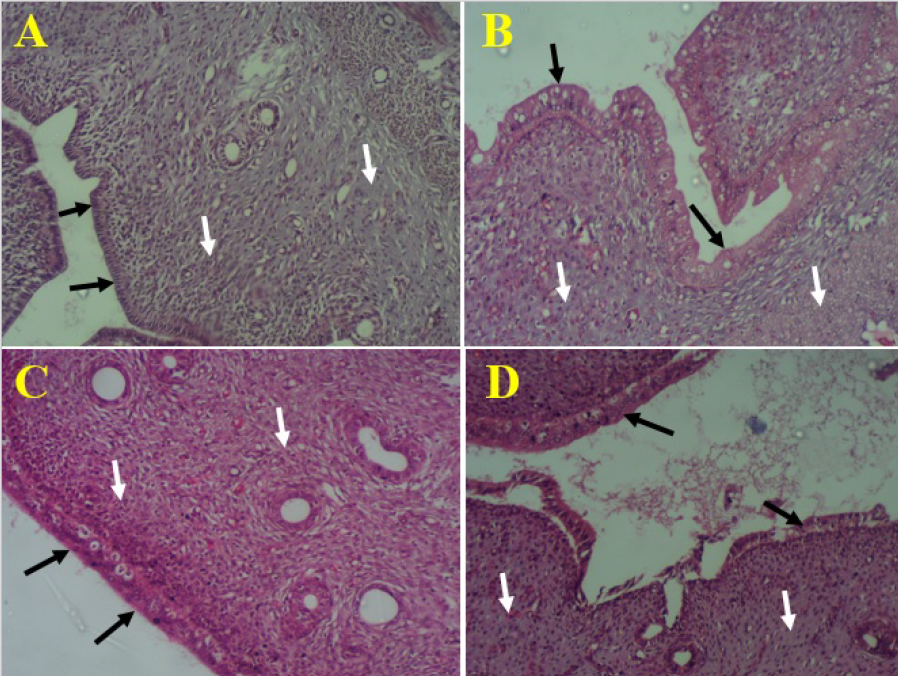
Effect of aqueous fruit extract of Xylopia aethiopica fruit on some fetal growth parameters and histology of uterus in Wistar rats
- Department of Human Anatomy, University of Maiduguri, Maiduguri, Nigeria
Abstract
Introduction: Xylopia aethiopica (X. aethiopica) fruit is widely used in Africa as a food additive. It is also employed to prevent nausea during pregnancy, aid uterine contractions during childbirth, treat menstrual flow anomalies, uterine fibroids, and malaria. With the increased consumption rate among pregnant women, especially in Nigeria, the present study aimed to evaluate the effects of the aqueous fruit extract of X. aethiopica on developing fetuses and pregnancy in rats. Methods: Twenty pregnant female rats (gestation day zero) were randomly assigned to four groups of five rats each. Group I served as the control and received distilled water, while Groups II–IV were given Xylopia aethiopica fruit extract at doses of 100 mg/kg, 200 mg/kg, and 300 mg/kg, respectively, for 18 days (days 1 to 18 of pregnancy). All rats were euthanized under ketamine injection on day 19. The abdomen was opened, and the number of live and dead fetuses and the crown-rump length were measured. The uterine horns were fixed in 10% formalin for light microscopy. Results: Administration of the aqueous fruit extract of X. aethiopica at 100 mg/kg, 200 mg/kg, and 300 mg/kg for 18 days significantly reduced (P < 0.05) the number of live fetuses, fetal viability, and crown-rump length, while increasing the number of dead fetuses compared to the control. Histological examination of the maternal uterine horn revealed distortion of the uterine epithelium in rats treated with 200 mg/kg X. aethiopica, and degenerating uterine epithelium and endometrial connective tissue in rats treated with 300 mg/kg X. aethiopica. Conclusions: Continuous consumption of X. aethiopica fruit during pregnancy could be toxic to the developing fetus and affect maternal health. Hence, caution should be exercised when consuming X. aethiopica fruit during pregnancy.

